HOKA Devotees: Our Shoe is Back!
HOKA One One is reissuing the original Bondi. The Bondi B. I don’t believe they did it for us. I do not see it for sale at Running Warehouse, RoadRunner Sports, Holabird, Zappos. But I do see it for sale on Opening Ceremony, described by Google as, “Modern retailer sells trendy designer clothing & accessories in a stylish store with a hipster vibe.” Outdoor Voices appears to have this in women’s only, in “Lime Sherbet/Super Pink” (apparently a special makeup for that retailer), and is “is a jog-walker’s dream.”
HOKA’s intends, it appears, to capitalize on the retro sneaker thing. But this is the one retro running shoe – with the possible exception of the Nike Air Mariah – that is worth buying anew for the purpose of running. Let me tell you why I’m quite excited about this.
The HOKA One One brand launched in 2010 with the Mafate. Early adopters (like me) were ridiculed for wearing Clown Shoes. Understandably. The shoe was the size of an oil tanker.
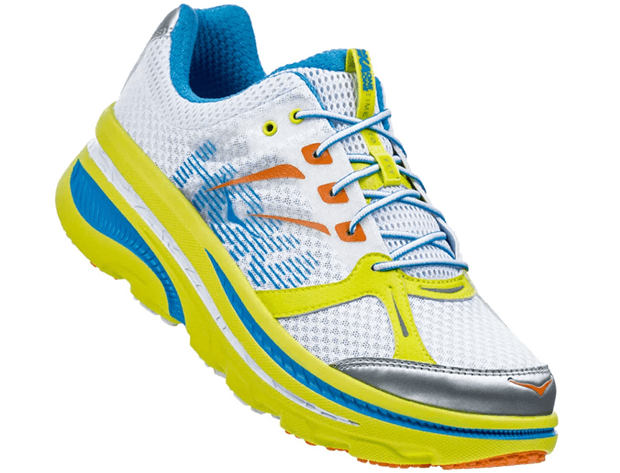
What made HOKA a curiosity were the features behind it: Lots of cushion; a midsole that wrapped around the upper, stabilizing the foot without using medial posting gimmicks; its “rocker” architecture; and its relatively low heel-to-forefoot drop. Still, that simply made HOKA a thought experiment.
The shoe that really launched HOKA was its next, the Bondi B.
The Bondi B retained everything that made the Mafate notable, but supercharged those features into a shoe road runners would appreciate. I moved from the Brooks Adrenaline to the Bondi B, and it became my training shoe, my racing shoe, my do-everything shoe, because the Bondi, while not a racing flat, was better – for me – than every current shoe in which I might race, from 5k up. The shoe was just fast. And protective. It had it all.
Eventually we got the Bondi 3 (a disaster); the 4 (better than the 3); the 5 (made me want to give up running for gardening); and the 6 (clawed back some dignity).
The Clifton displaced the Bondi as my race shoe (and every version of the Clifton has been better than the one before). There were other HOKA models that on paper had promise, like the Elevon, but when I ran in these shoes it made me wonder whether the people at HOKA actually ever laced up the shoes they made. The Elevon was billed as a plush shoe, but it is anything but.
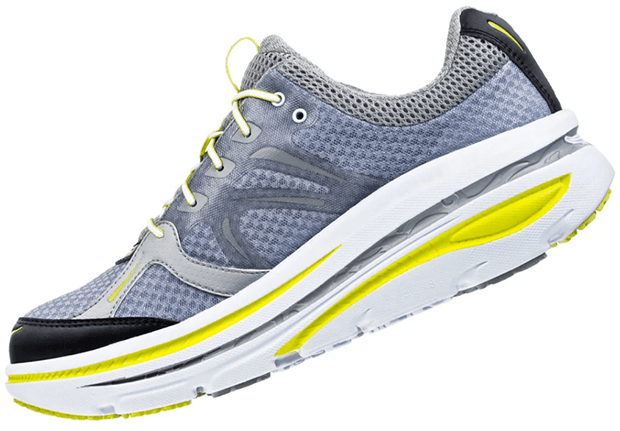
I’ve lamented here, in my reviews of successive Bondis and other HOKA models, the loss of the original Bondi B. About a week ago I wrote an email to my friend Jean-Luc Diard, one HOKA’s two founders, and who is today a VP at Deckers Outdoor in charge of Innovation and Advanced Product Development. “As my current Bondi 6 is at the end of its life, and I need to replace these,” I wrote him; “I’m looking at what I might get next.” Is there something in the line that is more like the Bondi B than the Bondi 6?
I migrated over to the HOKA website, and – lo! – a reissue of the Bondi B! I immediately plunked down my digits and bought a pair. They arrived 2 days later, and I couldn’t wait to lace them up and head out for a run. I’ve run in them each day since. Is this really the original Bondi? Luckily I don’t have to remember. I have an original pair with which to compare.
The Bondi B Reissue
As regards fit, dimensions, weight, durometer of the rubber, the shoes are identical or very close to it. Look at them side-by-side. My new Bondi B on the right is one original colorway, the shoe on the left is my remaining original Bondi B in the other color, and if you like one color over the other, fine, they’re both available. You’ll see very slight differences between the reissue and the original.
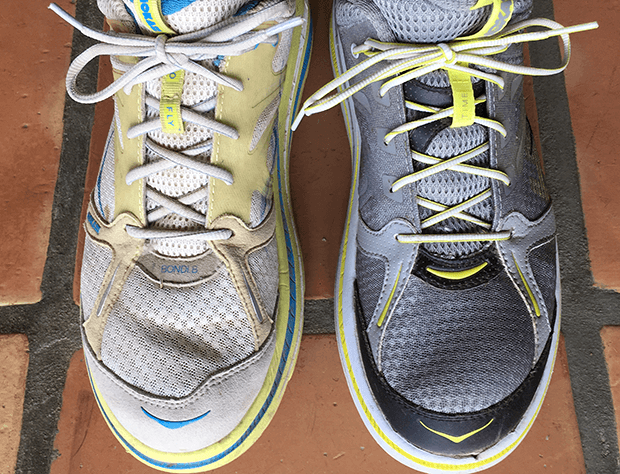
First, you’ll note that the trim is made of different material. The original Bondi B (at left, above) uses a suede leather (or imitation leather); the new uses a smooth grain trim, both in the toe and in the eyestay. The old suede is a little softer, slightly more pliable. It took a couple of runs for the new Bondi’s leather to feel indistinguishable from the old. You’ll also note that the old Bondi had a slightly different toe box trim pattern than the new, but I don’t favor one over the other.
The old Bondi used a larger diameter, softer shoelace. Really, my only gripe about the new Bondi B is this new lace. I use a “runner’s loop” and that means the lace, at the top of the shoe, runs inside the shoe from one hole to the other, and I feel that. Probably not enough to cause me to change the lace.
Everything else seemed the same, so I took them out for a run: and old Bondi B on one foot and a new one on the other. The shoelace is the only obvious difference I felt. Otherwise, they ran pretty well identically or if they didn’t, it was hard to perceive a difference. There’s just a touch more forefoot volume in the new Bondi. I suspect that might be just a difference in the thickness of the material, old to new. Mind, I’d be shocked if it’s the same fabric – rather the closest possible match – and I highly doubt it’s built in the same factory. Honestly, it’s surprising they got the shoe to match the old one so closely. As to the volume, the difference if any is very slight.
The performance of the midsole and outsole were indistinguishable. There may be some difference in the Rocker geometry, but I’m going to need more runs to parse it out.
Why this shoe is better than all Bondis after it
Weight and width. Basically, what HOKA did was try its hardest to turn the Bondi into the Mafate. It darn near succeeded. Below is a comparison of the forefoot outsole width difference between the USS Battleship Mafate and that speedboat the Bondi B (the new one).
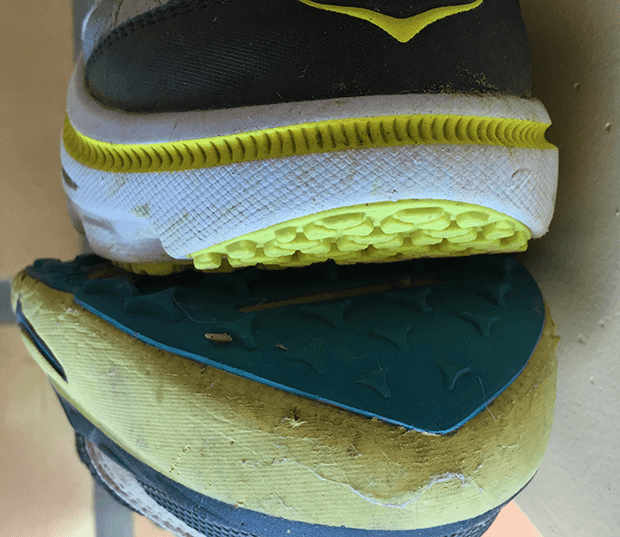
Below let’s compare the original Mafate, against the Bondi 5. The width of those shoes, across, the outsole, where the shoe actually contacts the ground, is virtually identical, both in the heel and across the ball of the foot. Why does this matter?
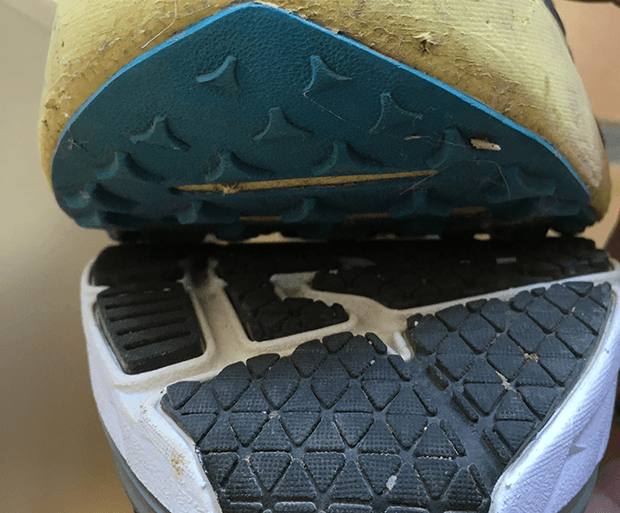
I’ve written about this before. Below is a pic of Ben Kanute (courtesy of Talbot Cox). When the shoe is wide, if you don’t come down with a perfect, square footfall, the ground will lever your foot once the first part of the shoe makes contact, forcing your foot down just like an airplane hitting the tarmac at an angle. I don’t want my mechanics altered with that amount of force. The shoe needs to be wide enough. And no wider.
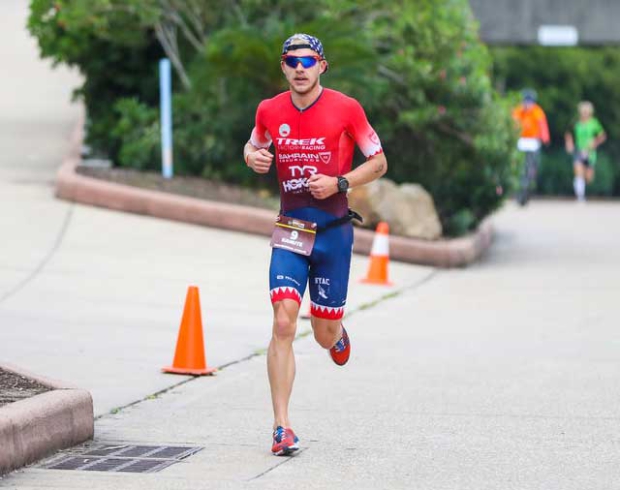
Second, the Bondi 5 was just heavier. If you add that much surface area to the outsole, it’s going to weigh more. One nice thing about the Elevon, it was noticeably lighter than the Bondi 5. Much more fun to run in. Except it was not in the least plush. The reissued Bondi B is lighter yet than the Elevon, and it’s more than a half-ounce lighter than the Bondi 6. This Bondi B is about ¾ of an ounce lighter than my Bondi 5. You can see why, when the Bondi 5 came out, I pretty much threw up my hands in despair. (At least the Bondi 6 was an improvement on the 5!)
What works for HOKA
When I was part of HOKA’s think tank, back in 2012, I would make a nuisance out of myself telling everyone that the midsole wrap was the secret sauce no one was mentioning. I don’t recall that it had a name back then, and I don’t really know whether HOKA understood how important this was. It certainly does now. It calls it the Active Foot Frame. For me, the lack of this feature is why I can’t run in Nike, and you’re beginning to see this more often now in competing brands. Here are HOKA’s technologies and you’ll see a very good explanation of why this is important.
HOKA says it “functions like a bucket seat in a racecar by cradling the foot.” Yes! The Bondi B’s chief geometric feature is the Active Foot Frame. Yet, on the scale of Neutral to Stable the shoe is listed as Neutral. This shoe can’t cradle the foot and also fail to be stable. The Bondi B is among the most stable shoes HOKA makes. I wish HOKA would stop acting as if “stable” is a 4-letter word in tech footrunning.
Shoes like the Hupana, that eschew (or minimize) this feature, this is the Neutral shoe. When a shoe lacks a robust Active Foot Frame, and the arch is carved out (visible when you view the shoe from the underside), and there’s no strong heel counter, this makes a HOKA like every other shoe out there, which is to say, in my opinion HOKA gives up its edge. That said, by all means make the Hupana if you want, but I can’t run in it, and it’s not the shoe that built HOKA.
During 2018 HOKA caught up after falling behind in the foam wars. And now it has a carbon plated shoe, and if you know some of the backstory there’s a case that HOKA has been planning this even before Nike. But HOKA’s singular achievement, technically, between 2013 and 2019? The upper. HOKA taught itself how to make running shoes. I love the Bondi B where it counts, which is from the waist down. But the Elevon, the Bondi 6, and the Fly Collection – the Cavu, Mach, Elevon, Hupana – these shoes are really comfortable to wear. A modern upper: this is what the reissued Bondi B doesn’t have.
Taking the Bondi B into the future
HOKA struck gold early in its life with the Bondi B. Why on earth it deviated from the Bondi’s world-beating features is God’s own mystery. Why did it get heavier, and why did it get wider?
Mind, it’s not as if the Bondi needs to remain as it is and I don’t want it to. HOKA makes a better upper now than it did when this shoe debuted. (Here I am, 8 years ago, running in my "jog-walkers dream.")

There has been a revolution in foam since the Bondi series debuted. It’s my guess the shoe could shed a little weight, and it certainly could gain comfort – become a sockless shoe for those so-interested – and adding a heel loop wouldn’t hurt (for triathletes).
If I’m honest, I often feel a little disdain for those who overcomplain about new editions of popular run shoes. That said, I’ll be stocking up on the Bondi B reissue. I feel like an idiot. I’m buying a shoe for tech running that’s issued to serve the style market. And I hope I’m acting foolishly. I hope some folks at HOKA do what I’m doing, and take the “jog-walker’s dream” out for a run, against the current Bondi 6. I hope HOKA remembers the Bondi B; that it starts fresh, adds what it’s learned about uppers and foam, but respects and honors what made this shoe such a favorite among triathletes, and eventually road runners.
I must also say something about HOKA’s management. When Deckers Outdoor bought this brand from Nico Mermoud and Jean-Luc Diard, I met with the first HOKA president under its new ownership, Jim Van Dine. “I predict HOKA won’t stop until it hits $300 million in technical footwear sales,” I told him. Lots of folks disputed that, reasoning that the other footwear giants would erect firewalls if HOKA presented that much of a threat. HOKA is now within spitting distance of that $300 million, and I still get the sense this brand is just warming up.
In my opinion, Slowtwitch was this brand’s kick-start. I can make a strong historical case that our community, you and I, generated this brand’s first $20 million in revenues. It was our consumers, triathlon’s retailers, triathlon’s attachment to fact, science, use case, rather than to tradition, convention, and brand name. Van Dine, and Ironman, and the rest of the triathlon community, were responsible for the next $80 million. Eventually that first Deckers management team gave way to the current management, and the rise from $100 million to where it is now – bumping up against the ceiling that I felt was reasonable – this tripling in revenues is due to the folks who’ve been running HOKA over its last 5 years.
Not only have the competing brands failed to stop HOKA’s rise, I don’t know where this brand’s ceiling is. I’d listen in on Deckers investor conference calls 3 years ago, dumbfounded that HOKA wasn’t even mentioned. Now HOKA is the darling of Deckers. Notwithstanding my small technical gripes about this and that, I doff my cap to the folks running the show over there.
The HOKA One One Bondi B reissue sells for $160; if you want to take the jog-walker’s dream out for a hot spin, you’ll probably need to get them from the manufacturer, as I did.


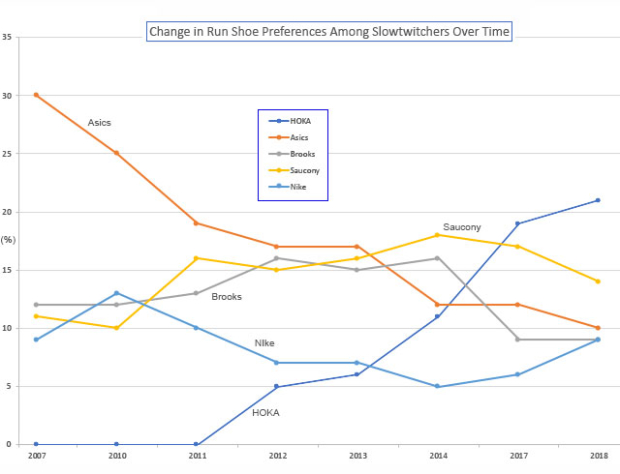
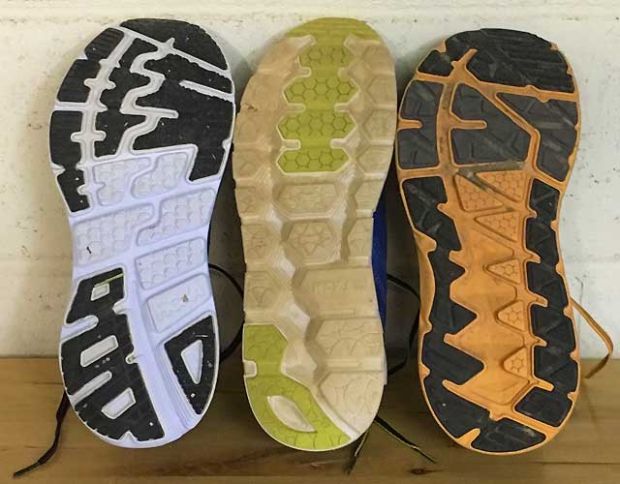
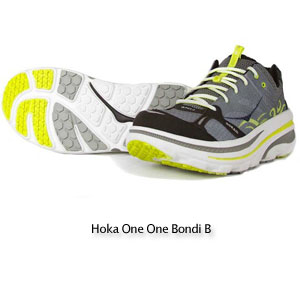
Start the discussion at slowtwitch.northend.network